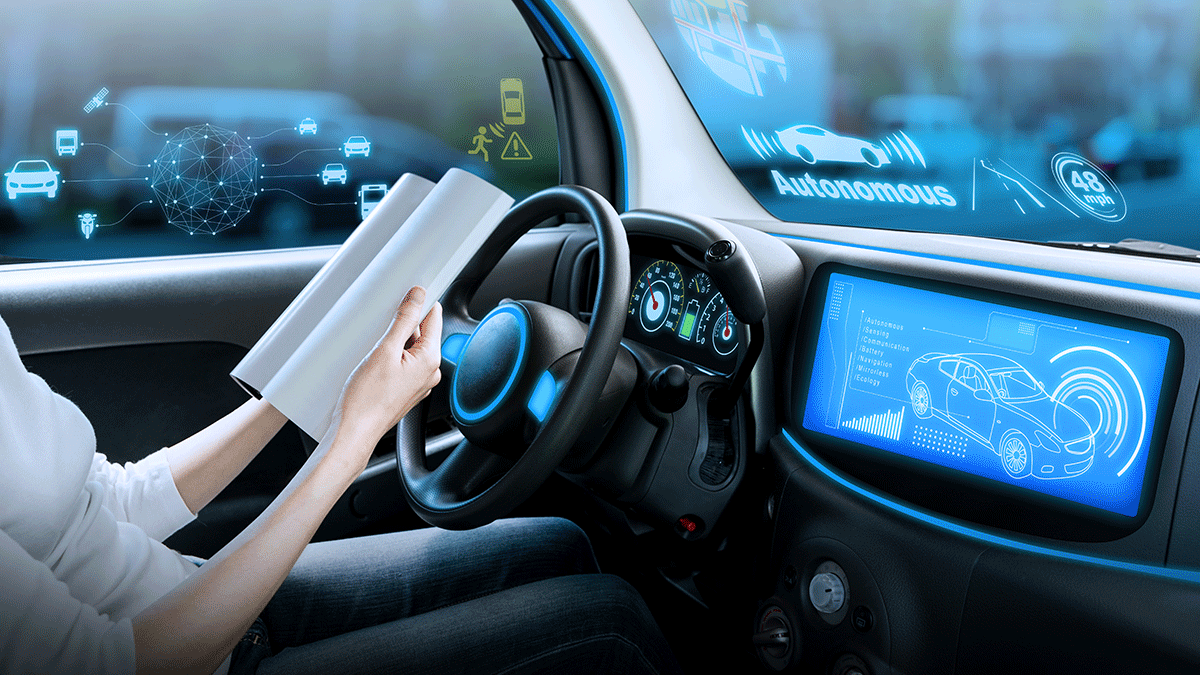For UCSC’s Adam Millard-Ball, it all started with a thought experiment. The associate environmental studies professor asked himself how a self-driving car might find parking within a downtown area in the coming decades, and he wondered how the resulting changes might affect traffic.
He believes the cars of the future will be programmed to find the cheapest parking options available, and will have no need to park near their destinations after dropping their owners off. So will an autonomous vehicle drop off its passenger in a busy downtown metropolis and then park somewhere on the city’s outskirts for free? Will it drive back home, only to return downtown to pick up its owner again later in the day? Or will it simply seek out a two-hour parking spot and then move just before the two hours is up?
Millard-Ball found that the answer to each of those questions is yes, after using game theory and a traffic simulation model to come up with his predictions. What surprised him, however, was the most common scenario the cars would choose, according to his experiment. Millard-Ball found that many cars will simply “cruise” around nearby until their owners finish with their downtown errands. The cars will coast around the streets, instead of looking for a spot, and create massive traffic jams in the process. His report argues the cars would “have the incentive to seek out and exacerbate congestion—even gridlock—in order to minimize costs to their owners.”
Unless mitigated by significant changes in transportation or urban planning policy, he says that traffic could be disastrous for the quality of life in cities, like San Francisco, as well as university campuses like UCSC.
Millard-Ball’s experiment created quite a stir on the internet on Friday. Someone posted a UCSC press release about the news to Reddit, where it catapulted to one of the site’s top three posts, quickly earning more than 70,000 upvotes via the forum’s science tab. The top commenter wrote, “Instead of parking lots, there will just be a giant ‘lazy river’ of cars.”
Millard-Ball likes the analogy. “That’s a really great description of what I’m modeling,” he says. Although several publications have blogged about his findings, he says GT was the first to call him up for an interview.
He notes that, generally speaking, some urban planners have started to call for cities to start thinking about converting some downtown parking lots to higher uses, like housing, in light of autonomous cars and other expected transportation changes. But Millard-Ball believes it’s time to start thinking about how to mitigate the resulting traffic problems that he says are also coming.
To be sure, it’s still unclear just how quickly self-driving cars will hit the streets—or how, exactly, the future of cars will look. A chart known as the Gartner Hype Cycle maps the level of enthusiasm that many tech trends tend to follow. According to that theory, interest spikes early, with a bump known as the “peak of inflated expectations,” and it’s followed by a cratering “trough of disillusionment.” Things pick up, the theory goes, after that, as innovations then start trickling in, perhaps a little later than expected—ultimately leading to a slow, steady stream of breakthroughs before progress plateaus.
Although many transportation experts are optimistic, self-driving cars could follow a similar trajectory. As the Washington Post reminded everyone recently, Tesla CEO Elon Musk said that one of his cars would be able drive itself across the country by 2018. This past fall, one crashed backing out of a garage.
Millard-Ball has a solution for the downtown traffic jams that he’s predicting. It’s called congestion pricing, the process of charging drivers per mile that their cars travel on busy metropolitan streets.
He foresees two challenges to doing that. The first is technological, although he believes barriers will go away once autonomous vehicles become widespread. The second is political. That’s why he says that government officials should act now to implement new regulations, at least on self-driving cars before they start popping up everywhere at once.
”People don’t like paying for something that they’ve been used to getting for free,” he says, “and that’s just as true for roads as it is for anything else.”
Update – Feb. 5, 2019: This story has been corrected to reflect the accurate spelling of Millard-Ball’s last name.














